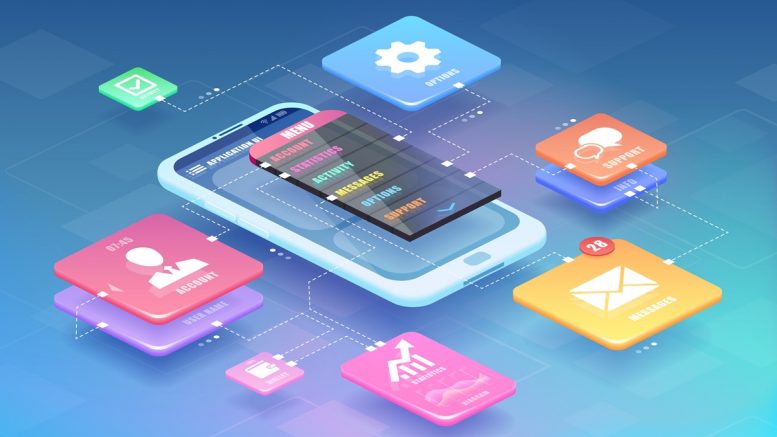In this article, Nanxi Liu, Co-CEO and Co-Founder of Blaze.tech, one of the fastest growing no-code platforms, shares how healthcare organizations can build HIPAA-compliant software and web applications without writing a single line of code.
For years, we’ve been promised a renaissance of efficiency in healthcare, but it always seems just out of reach. It’s no secret the industry can be hesitant to adopt the latest digital tools, often lagging behind other sectors by about ten years.
This reluctance is not simply stubbornness, but is rooted in pressing concerns. Patient data protection and compliance remain the priorities, but accessibility, scalability, and reliability are just as critical.
Fortunately, there is a new standard bearer in town: no-code platforms.
These platforms have quickly entered the scene with the potential to revolutionize agility in healthcare technology without compromising trust or quality. No-code platforms enable healthcare organizations to build critical apps and software to automate workflows and streamline operations, all without needing to use developers.
Traditional Software’s Stranglehold: Limitations and Real-world Implications
For countless healthcare professionals, the constraints of traditional software have become all too familiar—a persistent barrier to progress, like a tight collar on an otherwise impeccable suit.
Many doctors say they spend over half their day inputting information into electronic health record systems, or EHRs, instead of serving their patients. This painstaking process not only drains hours but also increases the risk of manual errors, potentially jeopardizing patient safety.
Legacy systems, with their rigid frameworks, are ill-equipped to adapt to the demands of modern healthcare. More concerning are their gaping security vulnerabilities. In 2020 alone, the healthcare sector bore witness to 616 data breaches, compromising a staggering 28.7 million patient records. Though not solely to blame, these legacy systems, with their archaic security mechanisms, were often the weak links.
The financial implications are equally dire. The American Hospital Association cites that these inflexible, non-interoperable systems rack up costs exceeding $8.3 billion annually for U.S. hospitals.
Even more alarming, today’s healthcare staff burnout can be traced back to such systems. A 2021 study revealed that 36% of clinicians were overwhelmed by administrative tasks, primarily due to software inefficiencies. Another hidden cost is the pricey vendor lock-ins, which not only burden providers financially but also stifle the integration of efficient, modern tech solutions.
Yet, despite these overwhelming challenges, many healthcare organizations cling to their legacy systems, deterred by the high costs of upgrades and the risks they perceive in transition. Smaller practices suffer doubly, struggling to compete with larger entities that boast more advanced technological resources.
The ongoing reliance on traditional software isn’t just a tech challenge — it’s a call to redefine our approach to healthcare delivery, emphasizing both agility and security.
No-Code’s Unveiling: From Game Changer to Industry Standard
No-code platforms have become the unsung heroes in healthcare’s digital evolution. Remember the time when creating software felt like a marathon, reserved only for the bigwigs with extensive resources?
Well, those days are fading. Now, every healthcare provider, be it a metro hospital or a cozy clinic, is discovering a fresh approach to tech, all thanks to the magic of no-code platforms — ushering in a new era of swift, streamlined operations.
Democratizing Patient Care Through No-Code
No-code emerges as a powerful equalizer, democratizing accessibility at its core.
Its main appeal lies in its simplicity. By eliminating the need for coding knowledge, even small, rural clinics can create customized applications that cater to their unique requirements. Large hospitals also benefit from these platforms’ speed and adaptability, finding assurance in this DIY approach to software that breaks down technological barriers. Such inclusivity ensures that every healthcare entity can compete on an equal footing.
But let me be even more direct: the significance lies not only in accessibility but also in affordability.
Traditional software development is notorious for its escalating costs, which is unavoidable when hiring specialists and managing prolonged project timelines. Apps have been known to run into the hundreds of thousands. On the other hand, opting for no-code presents immediate cost savings that mirror its near-immediate deployment.
While industries like retail and finance have quickly embraced digital transformation, the healthcare sector has lagged nearly a decade behind. Fortunately, this is changing with the increased adoption of no-code platforms, signifying a digital awakening within the healthcare industry.
Indeed, no-code solutions even the playing field between major hospitals and neighbourhood clinics, but most importantly, they improve the quality of patient care.
No-Code Healthcare Success Stories: Levelling the Playing Field
Apps like Tempo, built by Still Me, an Australia-based healthcare company, are prime examples of the transformative power of no-code technology.
Having recognized the significant gaps between freelance healthcare professionals and providers, Tempo pioneered an innovative marketplace. Their platform, built using Blaze’s no-code app builder, seamlessly connects professionals — from nurses to speech pathologists — with healthcare entities desperate to fill real-time shift vacancies.
Tempo was able to leverage the no-code platform to build its app’s features like vet provider qualifications, approve pay, finalize shifts, manage schedules and upload essential credentials.
Nicola Cuthbert, Tempo’s CEO, shared that using a no-code platform like Blaze allowed them to fully realize their team’s user-centric design, and keep app development costs affordable.
In fact, Tempo received accolades at the Australian Women in Small Business Champion Awards. Blaze and Tempo’s no-code collaboration epitomizes the transformative power of technology in healthcare – if you can envision it, you can build it.
The Philosophical Shift: An Industry Reimagined
As we navigate this digital landscape, it is clear that the acceptance of no-code extends beyond being just another tool. It embodies a fundamental change in how healthcare views technology.
No-code is changing the game, promoting inclusivity and flexibility. It envisions a future where every healthcare provider, regardless of their resources or budget, can offer exceptional patient care. It’s not just about democratizing technology; it’s about democratizing healthcare as a whole. With new no-code tools that prioritize enterprise security and HIPAA compliance, providers can worry less about technology and focus more on their patients.
It represents more than just an upgrade in software systems; it reaffirms the fundamental principle of the industry: providing optimal care for everyone. In this renewed perspective, no-code platforms are not just tools but the essential foundation of an inclusive, streamlined, and adaptable future for healthcare.
Author Brief Bio:
Nanxi Liu is the Co-CEO and Co-Founder of Blaze.tech, one of the fastest growing no-code platforms. Blaze enables healthcare organizations to build HIPAA-compliant software and web applications without writing code. She was named Forbes 30 Under 30 and Fortune’s Most Promising Women Entrepreneurs. Nanxi is an Emmy-winning Television producer and is a Partner at XFactor Ventures, a VC that has invested in 90+ women-founded startups. Passionate about community service, Nanxi serves on the board of the National Foster Youth Institute and the Los Angeles Dodgers Foundation. Nanxi graduated from UC Berkeley.





